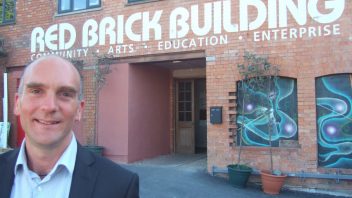
On Wednesday 4th September 2013 the first stakeholder meeting of the Glastonbury & Street REconomy project was held at the Red Brick Building in Glastonbury. This was an invitation-only meeting to initiate a REconomy Project in the local communities. Funding for the event had been generously provided by Martin Stanley of the Holly Hill Trust.
Why I held the event
The meeting agenda was:
- Free, locally sourced buffet lunch
- An introduction to the national REconomy Project from Fiona Ward of Transition Network
- An introduction to the Glastonbury & Street REconomy from Nick Osborne of Transition Glastonbury
- Short summaries from each stakeholder to say what they are up to in this area
- Convergence conversation to join the dots, wrap it up and decide next steps
The process of building local capacity to create a new type of local economy requires the participation of a wide variety of important stakeholder groups. Over the last year I have been asking around to find out who is already doing what in this territory, and found that there are a number of local people and organisations who are already active. But they weren’t all in contact with each other or aware of what each other was doing.
So it seemed to me that a good place to start would be to invite these people to an event where we shared ideas about who is doing what, to join up the dots, identify areas for potential collaboration, and use this as a basis for deciding next steps.
Who attended
- Fiona Ward Transition Network Reconomy Project
- Martin Stanley Holly Hill Charitable Trust
- Brian Hobbs Glastonbury Trust
- Ian Tucker Beckery Island Regeneration Trust (popped in for ½ hr)
- Paul Lund Sustainable Environment Company
- Terry Clay Glastonbury Development Trust
- Kim Robinson Credit Union & Enterprise Advisor
- John Capper Pilgrim Reception Centre & Enterprise Trust
- Alan Gloak Somerset County Council
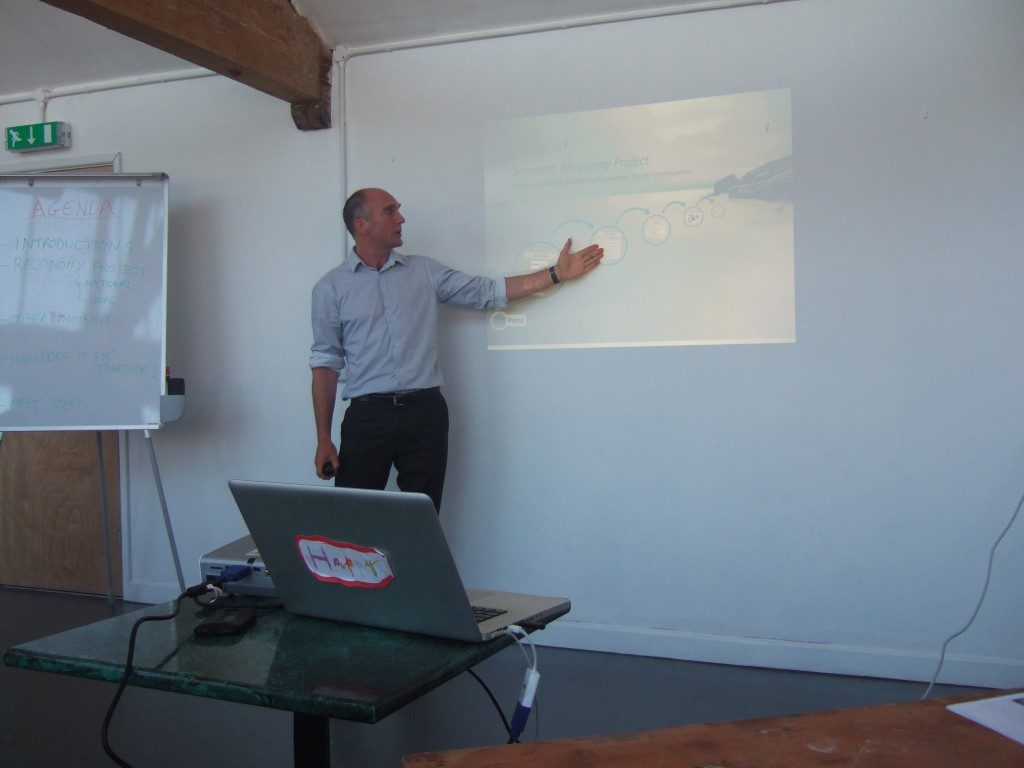
Nick Osborne outlines the potential benefits to local organisations
How it feeds into the wider REconomy potential
Other stakeholder groups that I think it makes sense to engage are shown in the diagram below.
Currently there does not seem to be any way in which all of these stakeholder groups are connected with each other to further local economic development. So the idea is that the local REconomy project can be a catalyst to connect these different groups in a Local REconomy Forum.
This would be similar to the one it Totnes, with the purpose of creating a forum for these diverse groups of stakeholders to represent their views in a coherent strategic overview for building a more sustainable local economy.
At the same time, the REconomy Project can run certain projects such as a Green Dragon’s Den, an incubator to support new green start-ups, and Economic Evaluation project perhaps, and other projects as required.
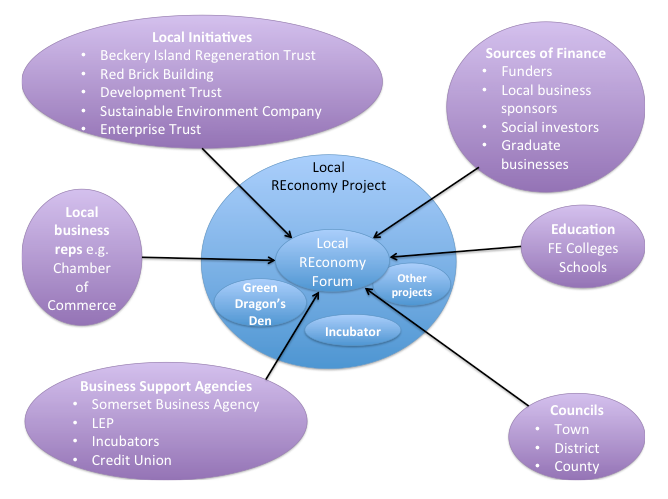
Outcomes of the day
Over the last two years I have come up with lots of ideas about projects that the local Reconomy project could do. Putting them all down on paper made it feel like quite a daunting mountain to climb. Listening to all the ideas from the various stakeholders, I heard that more than half of the things that I had thought, other people were already doing or intending to do. It seems that the important next step is to create the Local REconomy Forum for these local initiatives to co-ordinate with each other, and also connect up with the other stakeholder in the diagram above.
Seeing as there are not already existing forums for all of these stakeholder groups, part of the work of the REconomy Project would be to convene and host these forums and link them all into the Local REconomy Forum.
At the end of the event, the participants agreed that a Local REconomy Forum was a good idea, they supported it (with some needing to get the approval of their organisations) and now I am looking at how best to take things forward. The Holly Hill Trust has already kindly provided some funding to help cover my time and the costs of at least one follow-up event, which will be a big help.
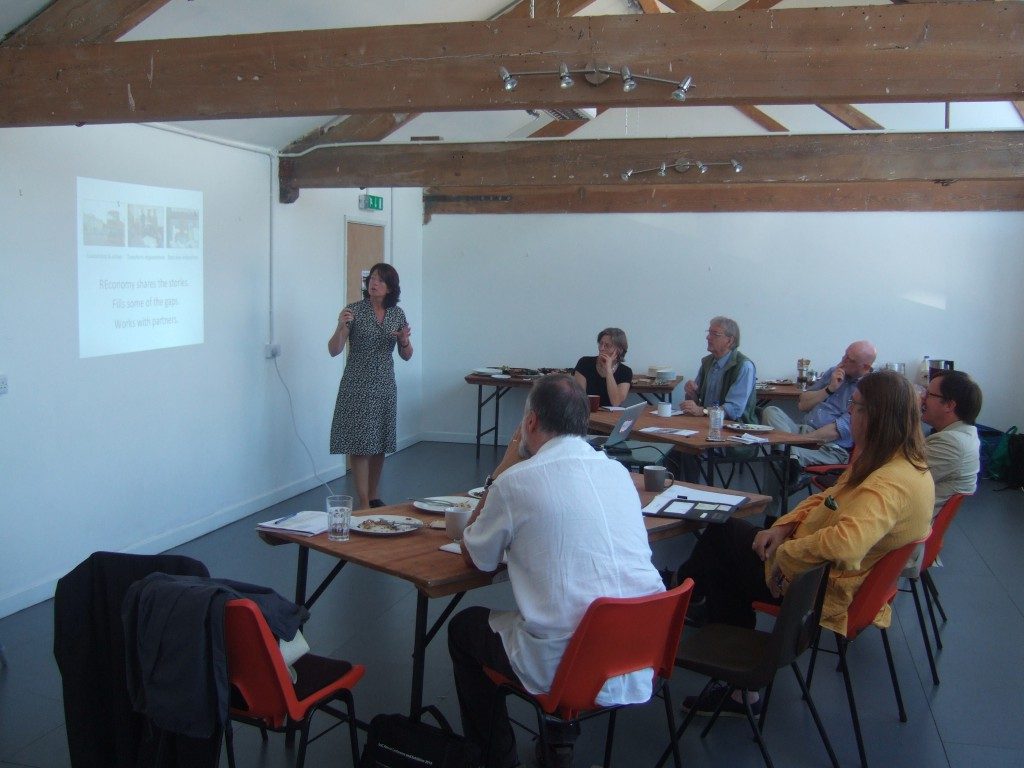
Fiona Ward explains the thinking behind the REconomy Project
Learnings & would I suggest this approach to others?
The whole process takes a lot of time. About 12.5 days of time over about a year of meeting and liaising with various local stakeholders, writing funding proposals (for various aspects of REconomy including an incubator) and arranging, preparing and facilitating the first stakeholder meeting. That’s around a day a month.
It seems important to connect with what’s already going on and join existing momentum. Lots of it is already happening, so I’d suggest that other places looking to start some REconomy action also take the time to map out the current activity, and see if its integrated or not.
Local politics are always an issue, and it seems to be an important piece of the groundwork to meet with and hear multiple views from various people to get a sense of these politics. And this takes an investment of time too.
If you have the time and energy for this approach, it feels like it helps provide a solid foundation on which you can build and that’s why I took this approach. We will report our progress as it happens.
Guest post from Nick Osborne, nick@response-ability.org.uk

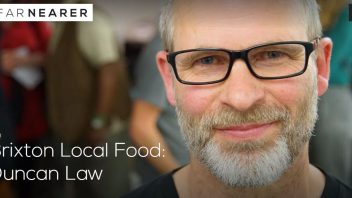
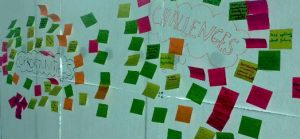

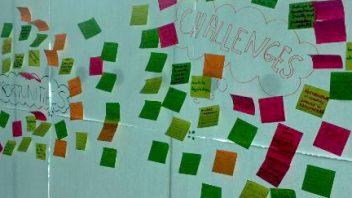
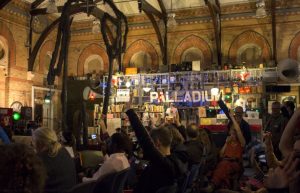

Connect